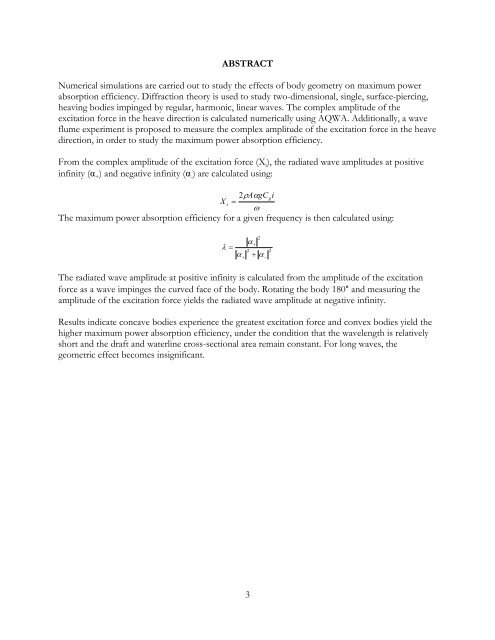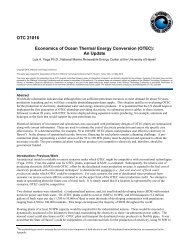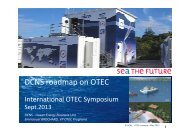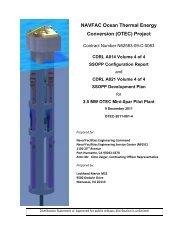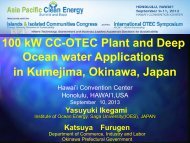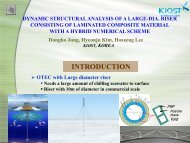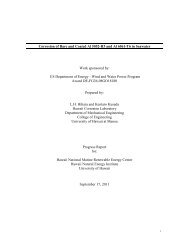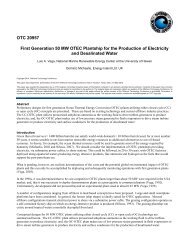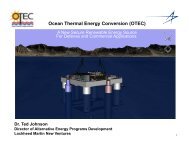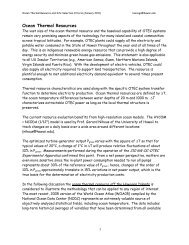MS Thesis R. Hager - Hawaii National Marine Renewable Energy ...
MS Thesis R. Hager - Hawaii National Marine Renewable Energy ...
MS Thesis R. Hager - Hawaii National Marine Renewable Energy ...
- No tags were found...
You also want an ePaper? Increase the reach of your titles
YUMPU automatically turns print PDFs into web optimized ePapers that Google loves.
ABSTRACTNumerical simulations are carried out to study the effects of body geometry on maximum powerabsorption efficiency. Diffraction theory is used to study two-dimensional, single, surface-piercing,heaving bodies impinged by regular, harmonic, linear waves. The complex amplitude of theexcitation force in the heave direction is calculated numerically using AQWA. Additionally, a waveflume experiment is proposed to measure the complex amplitude of the excitation force in the heavedirection, in order to study the maximum power absorption efficiency.From the complex amplitude of the excitation force (X i ), the radiated wave amplitudes at positiveinfinity (α + ) and negative infinity (α - ) are calculated using:2AgCgiXiThe maximum power absorption efficiency for a given frequency is then calculated using:22 2The radiated wave amplitude at positive infinity is calculated from the amplitude of the excitationforce as a wave impinges the curved face of the body. Rotating the body 180° and measuring theamplitude of the excitation force yields the radiated wave amplitude at negative infinity.Results indicate concave bodies experience the greatest excitation force and convex bodies yield thehigher maximum power absorption efficiency, under the condition that the wavelength is relativelyshort and the draft and waterline cross-sectional area remain constant. For long waves, thegeometric effect becomes insignificant.3


